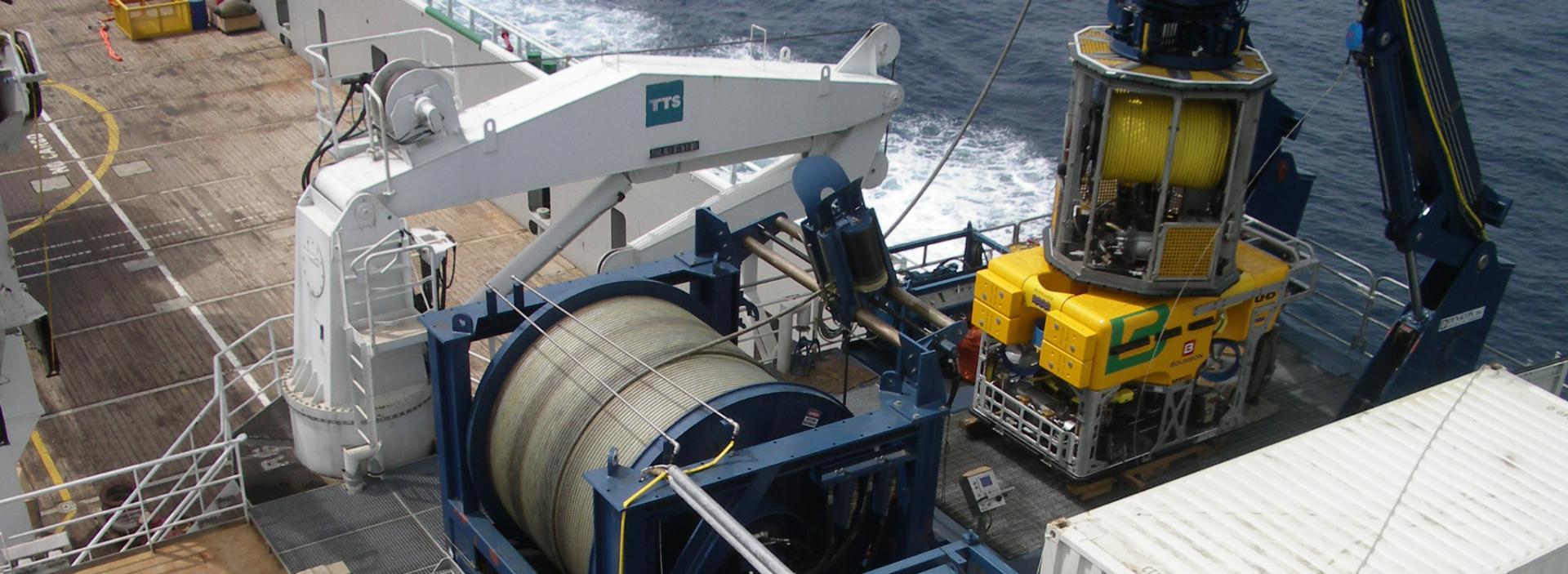
Drilling: support mission by the Bourbon Peridot
In early 2015, the Bourbon Peridot, an IMR vessel in the BOURBON fleet, completed a support mission at the rig Cajun Express for the company Canadian Natural Resources (CNR), on the Baobab field in Côte d'Ivoire. For several months, the vessel, equipped with its UHD ROV, performed the initial survey1 and metrology2 operations, before securing the various well drilling stages.
"These support operations are not very frequent, as rigs usually have their own ROVs and are therefore self-sufficient" says David Friedman, the vessel's shift supervisor. "In this case, the client wanted to be able to count on a backup ROV in case of technical problems, but also on a vessel to store the equipment used in drilling or, more conventionally, to resupply the rig. It turned out that in the end, our ROV was the one used throughout the operation."
A high precision job
The ROV, an essential tool for any drilling operation... When you have to drill a well in several hundred meters of water, aiming at a target measuring about 1m2 at most, the ROV remains indispensable, thanks to its high definition cameras and manipulator arms.
"Drilling a well is a complex operation that involves several steps: marking the area to be drilled, preparing the pipes, installing the drill line, etc." adds David Friedman. "At such depths – in the Baobab field, about 1,200 m – the slightest deviation is costly. Even if the rig is a DP structure, it is important to make sure that the operation is going correctly, by being as close to the drilling area as possible. The ROV, which is eyes of the onboard teams, is the only thing capable of carrying out this mission." A high precision job. For example, the verticality of the drilling line must be controlled down to 1 or 2 degrees...
"Drilling a well is a complex operation that involves several steps..."David FriedmannVessel's shift supervisor
The shift supervisor: an orchestra conductor
Aboard the vessel, there is one central coordinator: the shift supervisor.
In direct contact with the participants of the operation on the vessel and on the rig, he plays a major role. "It's both a great responsibility and an exciting job that lets you get your hands on all parameters. Whether in the preparatory phase or the operational phase, the shift supervisor is the referee, with great decision-making power. He is the one who performs the risk analyses, monitors compliance with procedures, indicates what the ROV must do, informs the rig in real time, gives his instructions to the crane operator, the deck foreman, etc. He's a real conductor: he doesn't play an instrument, but he plays the score."
After this operation, the Bourbon Peridot teams, i.e., about 50 employees, will have closely overseen the drilling of 5 wells on the Baobab field, while providing logistical support to the rig.
1Survey: operations to identify items present in the water (pipes, etc.)
2Metrology: remote measurement and control to position the various elements of the well
- Survey and metrology to mark off the area to be drilled with 4 buoys, located at the 4 cardinal points, about 2m from the center. In the center, the target, marked by a sandbag
- The rig sends out the conductor (1m pipe with the drilling line inside it)
- Drilling by injecting of water from the first layer, composed of mud, clay and sand (to about 100 m in depth)
- Drilling at greater depths by the drilling head and regular consolidation of the well by installing casings (the first sealed barrier to allow the ascent of the oil in a controlled manner) and grouting
- Closure of the well with a wellhead or Xmas Tree


